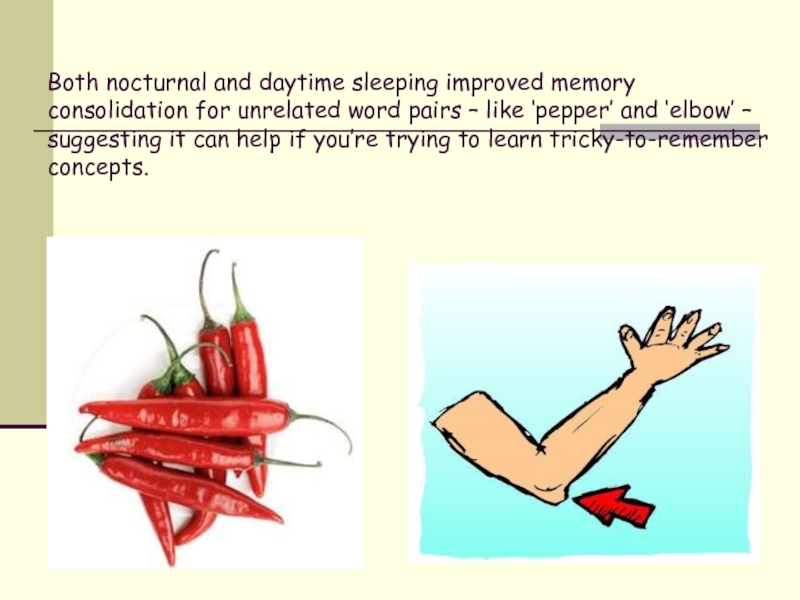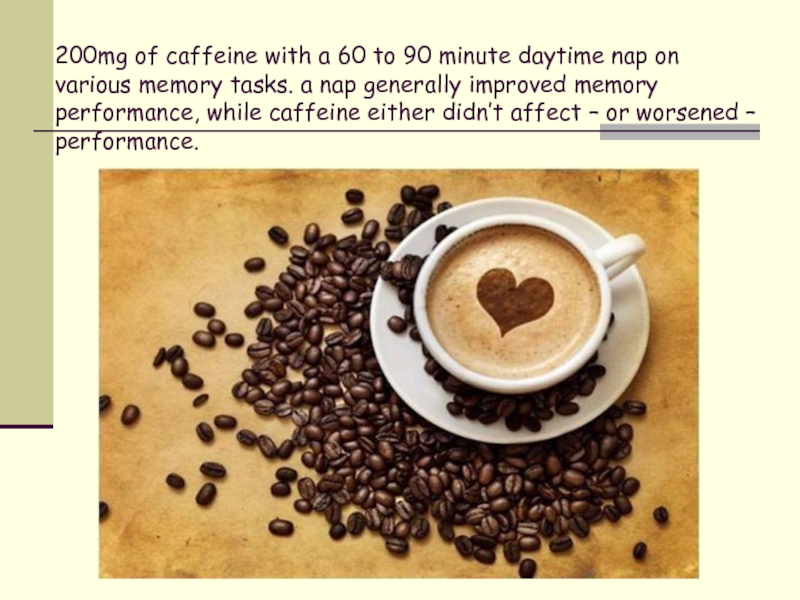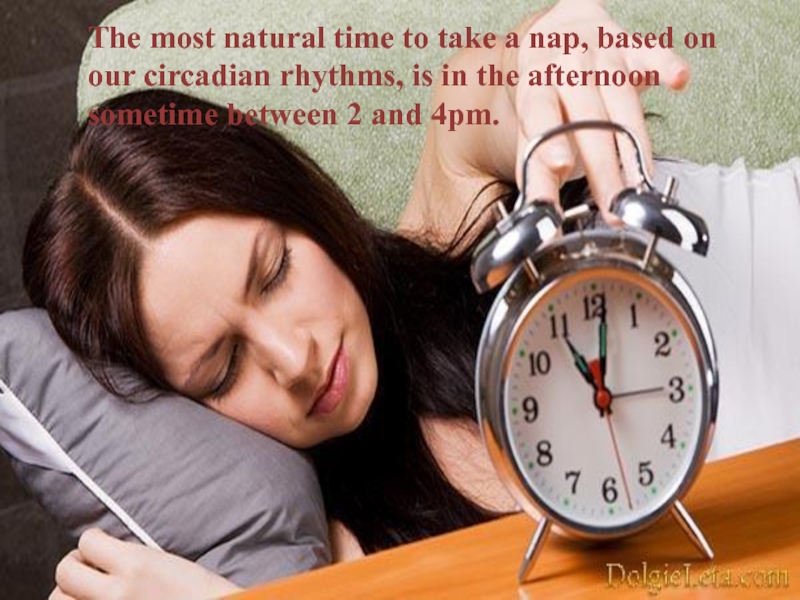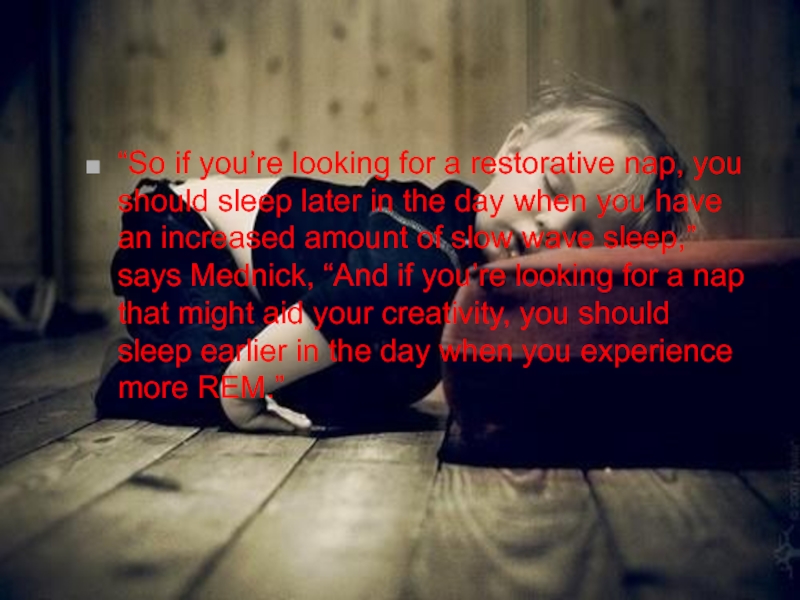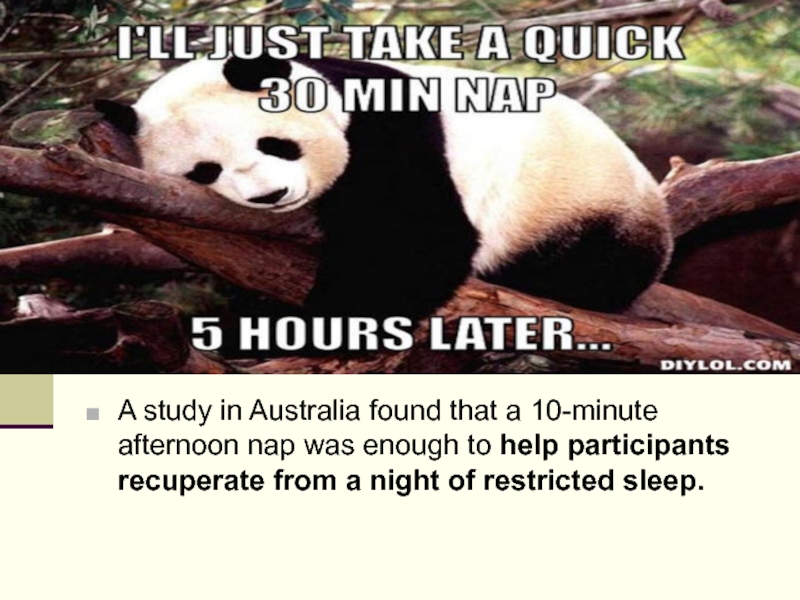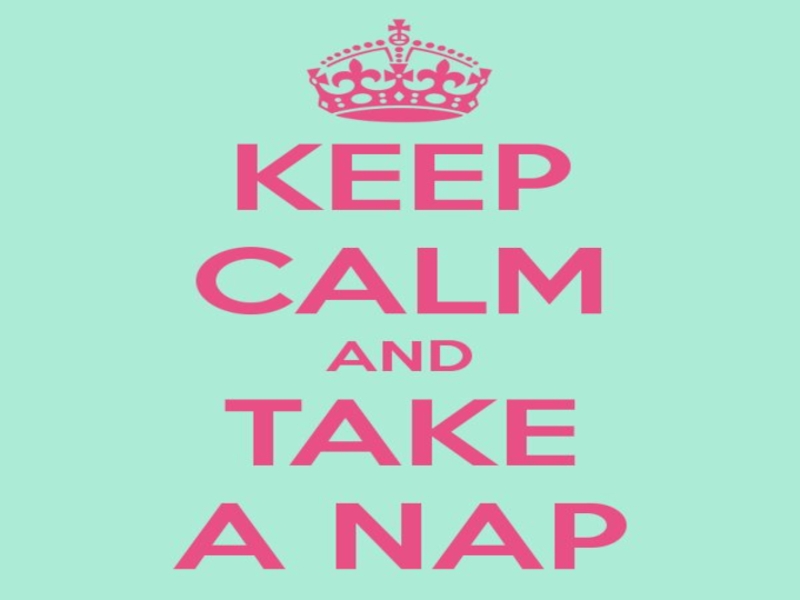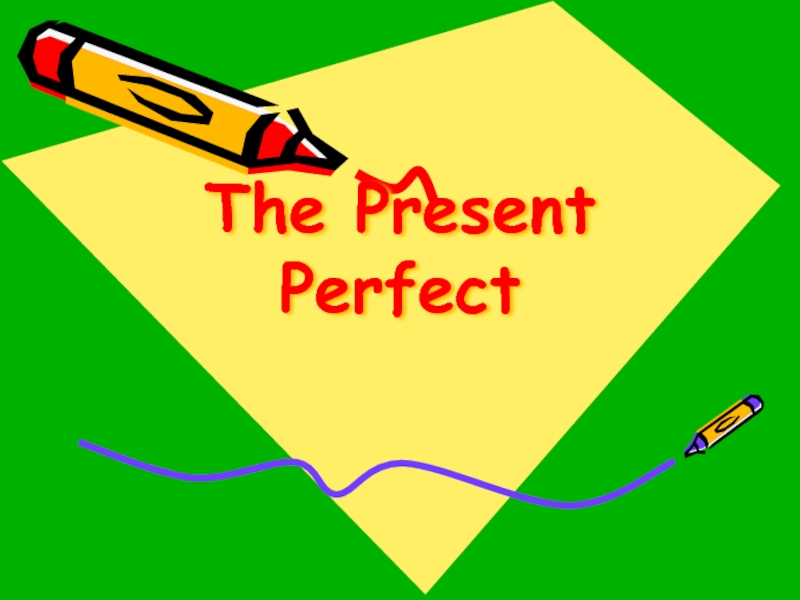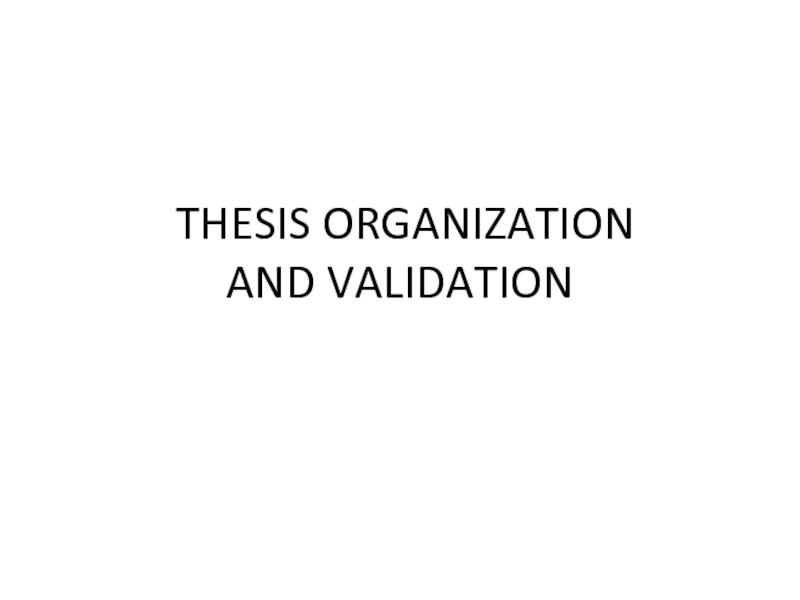- Главная
- Разное
- Дизайн
- Бизнес и предпринимательство
- Аналитика
- Образование
- Развлечения
- Красота и здоровье
- Финансы
- Государство
- Путешествия
- Спорт
- Недвижимость
- Армия
- Графика
- Культурология
- Еда и кулинария
- Лингвистика
- Английский язык
- Астрономия
- Алгебра
- Биология
- География
- Детские презентации
- Информатика
- История
- Литература
- Маркетинг
- Математика
- Медицина
- Менеджмент
- Музыка
- МХК
- Немецкий язык
- ОБЖ
- Обществознание
- Окружающий мир
- Педагогика
- Русский язык
- Технология
- Физика
- Философия
- Химия
- Шаблоны, картинки для презентаций
- Экология
- Экономика
- Юриспруденция
How to nap like a pro презентация
Содержание
- 1. How to nap like a pro
- 2. Both nocturnal and daytime sleeping improved memory
- 3. 200mg of caffeine with a 60 to
- 4. The promised benefits of sleep have even
- 5. The most natural time to take
- 6. The results of the Mednick’s test have showed that REM can enhance creative problem solving.
- 7. “So if you’re looking for a
- 8. A study in Australia found that
Слайд 2Both nocturnal and daytime sleeping improved memory consolidation for unrelated word
pairs – like ‘pepper’ and ‘elbow’ – suggesting it can help if you’re trying to learn tricky-to-remember concepts.
Слайд 3200mg of caffeine with a 60 to 90 minute daytime nap
on various memory tasks. a nap generally improved memory performance, while caffeine either didn’t affect – or worsened – performance.
Слайд 4The promised benefits of sleep have even persuaded a few firms
to allow their employees to nap at work. Earlier this year, software company HubSpot designed a napping room in its Massachusetts office that features a hammock and dim lighting. Employees are free to book the space without limitations.
Слайд 5 The most natural time to take a nap, based on our
circadian rhythms, is in the afternoon sometime between 2 and 4pm.
Слайд 7
“So if you’re looking for a restorative nap, you should sleep
later in the day when you have an increased amount of slow wave sleep,” says Mednick, “And if you’re looking for a nap that might aid your creativity, you should sleep earlier in the day when you experience more REM.”
Слайд 8
A study in Australia found that a 10-minute afternoon nap was
enough to help participants recuperate from a night of restricted sleep.

